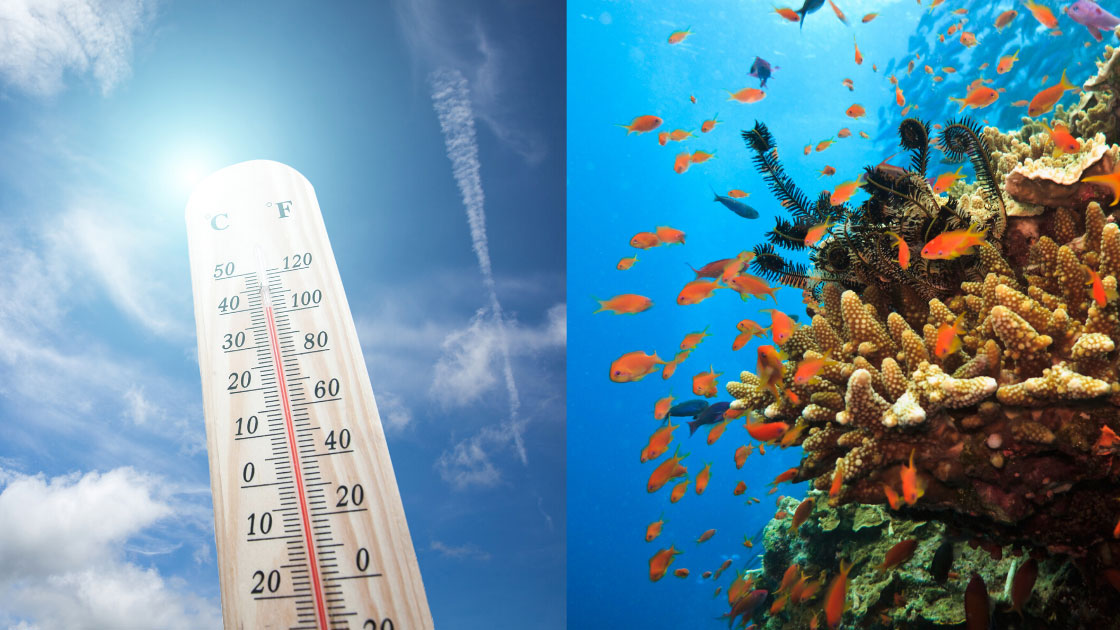Key messages >>>
- Given the high likelihood of a temperature rise of more than 1.5°C by 2100, adaptation measures and risk response measures are absolutely crucial. How can science better respond to informing adaptation strategies?
- Science attributes very high confidence to greater risks associated with ‘heat-related morbidity and mortality’ and ‘loss of coral reefs’ with temperature increase of more than 1.5°C by 2100. What risk reduction strategies are needed in this regard?
- What responses are required to better manage trade-offs of mitigation with measures related to poverty reduction, zero hunger, water management, and energy access?
- What reforms are needed in global processes for an accelerated action-oriented response to climate change?
1.5oC Plus global warming seems inevitable
It is now quite clear that we have to limit average warming of the earth’s temperature to below 1.5oC by 2100 relative to preindustrial periods. This requires a peaking of global emissions no later than 2020. The Fourth Assessment Report of the Intergovernmental Panel on Climate Change (IPCC), which was released in 2007 clearly specified 2020 as the year when emissions must peak even for a range of GHG concentrations to limit temperature increase to 2.0oC. The current situation is grim, with every single scenario which has been developed in respect of pathways for future emissions, clearly shows that we may end up with a temperature increase, by 2100, somewhere between 3oC to 4oC (Pachauri 2019a). In fact, the Fifth Assessment Report (AR5) of the IPCC stated “Global mean temperature increases in 2100 in baseline scenarios – those without additional mitigation – range from 3.7oC to 4.8oC above the average for 1850–1900 for a median climate response. The 1.5oC limit, which has now been accepted would only make radical reductions essential if we are not able to achieve peaking by 2020.
According to IPCC’s special report on the impacts of global warming of 1.5°C above pre-industrial levels, human activities are estimated to have already caused approximately 1.0°C of global warming above pre-industrial levels (IPCC 2018). With high confidence, the IPCC also projects that global warming is likely to reach 1.5°C between 2030 and 2052 if emissions continue to increase at the current rate (ibid). Climate-related risks for natural and human systems are higher for global warming of 1.5°C than at present, but lower than at 2°C. Limiting global warming to 1.5°C by 2100 compared to 2°C is projected to lower the impacts on terrestrial, freshwater and coastal ecosystems and to retain more ecosystem services for humans.
A warning bell for coastal regions and small island developing states
A temperature rise of 2°C implies that an additional 10 million people are likely to be exposed to climate related risks associated with sea level rise. In other words, if the temperature rise remains below 1.5°C, fewer people will be exposed to risks. The report attributes high confidence to the exposure of small islands, low-lying coastal areas and deltas to the risks associated with sea level rise for many human and ecological systems, including increased saltwater intrusion, flooding and damage to infrastructure. This will have serious implications for coastal areas in countries and small island developing states. Even for a 1.5°C temperature rise by the end of the present century, coral reefs are projected to decline by a further 70–90%, and very high confidence in terms of larger losses (>99%) of coral reefs is attributed at 2ºC temperature rise by 2100.
Risks associated with hotter days
Climate models used for the special report project robust differences in regional climate characteristics between present-day and global warming of 1.5°C, and between 1.5°C and 2°C. These differences include increases in mean temperature in most land and ocean regions. High confidence is attributed to impact in terms of hot extremes in most inhabited regions while medium confidence is attributed to impacts such as heavy precipitation and drought and precipitation deficits in some regions. Future risks from 1.5oC Plus temperature increase scenarios include those associated with number of hot days, which is projected to increase in most land regions, with highest increases in the tropics. The special report attributes very high confidence to greater risks associated with heat-related morbidity and mortality that would come with temperature increases of more than 1.5°C.
Global responses required
Time is running out. It is now also apparent that the decarbonization in terms of reduction in global emissions should preferably occur by 2040 and certainly not later than 2050 (IPCC 2018; Pachauri 2019b). Given the large headway to be made in decarbonization by 2040 and certainly not later than 2050, peaking of emissions by 2020 is imperative. Can global society and decision makers be motivated and convinced on reaching this goal within the next year or so? And can the youth of the world be motivated to take the lead?
The special report is very clear in its message that climate-resilient development pathways would have to differ between and within regions and nations, due to different development contexts and systemic vulnerabilities. Thus, context-relevant design and implementation measures need to be taken considering people’s needs, biodiversity, along with other sustainable development dimensions. For global responses, partnerships are crucial. These partnerships would need to involve non-state public and private actors, institutional investors, the banking system, civil society and scientific institutions to facilitate measures and responses to climate change. 1.5°C pathways have robust synergies particularly for the sustainable development goals related to health, clean energy, cities and communities, responsible consumption and production and oceans. For the same, very high confidence has also been attributed by the IPCC. If not managed properly, there may be potential trade-offs in terms of poverty, hunger, water, and energy access.
Need for reform of global processes
Perhaps the time has come for those justifiably concerned about the current process to support a very different structure and completely different system by which the world can support reducing its emissions, beginning with peaking at the earliest, if not by 2020. The science of climate change compels us to do so. The future of our children and grandchildren makes it a moral imperative for us to come up with a refreshing and totally different approach before COP 26 is held. In this space, an alternative approach should be presented very soon. But perhaps before that the children who are protesting all over the world should highlight the abysmal failure of the UNFCCC and the terrible let down that COP 25 has proven to be like all the COPs before this. They must reveal the truth that the emperor is wearing no clothes. After all, in Hans Christian Anderson’s true to life story it was a child who spoke the truth in contradiction to the spineless toadies who regard themselves as adults.
Questions
With the above background, following questions become relevant:
- Given the high likelihood of a temperature rise of more than 1.5°C by 2100, adaptation measures and risk response measures are absolutely crucial. How can science better respond to informing adaptation strategies?
- Science attributes very high confidence to greater risks associated with heat-related morbidity and mortalityand loss of coral reefs with temperature increase of more than 1.5°C by 2100. What risk reduction strategies are needed in this regard?
- What responses are required to better manage trade-offs of mitigation with measures related to poverty reduction, zero hunger, water management, and energy access?
- What reforms are needed in global process for an accelerated action-oriented response to climate change?
References
IPCC (Intergovernmental Panel on Climate Change) (2018), “Summary for Policymakers”. In: Global Warming of 1.5°C. An IPCC Special Report on the impacts of global warming of 1.5°C above pre-industrial levels and related global greenhouse gas emission pathways, in the context of strengthening the global response to the threat of climate change, sustainable development, and efforts to eradicate poverty [Masson-Delmotte, V., P. Zhai, H.-O. Pörtner, D. Roberts, J. Skea, P.R. Shukla, A. Pirani, W. Moufouma-Okia, C. Péan, R. Pidcock, S. Connors, J.B.R. Matthews, Y. Chen, X. Zhou, M.I. Gomis, E. Lonnoy, T. Maycock, M. Tignor, and T. Waterfield (eds.)], Geneva: IPCC.
Pachauri, R.K. (2019a), “COP 25: The Emperor is Wearing No Clothes”, Blog, World Sustainable Development Forum, https://worldsdf.org/blog/transformative-shift-to-deal-with-climate-change/.
Pachauri, R.K. (2019b), “Transformative Shift to Deal with Climate Change”, Blog, World Sustainable Development Forum, https://worldsdf.org/blog/transformative-shift-to-deal-with-climate-change/.



